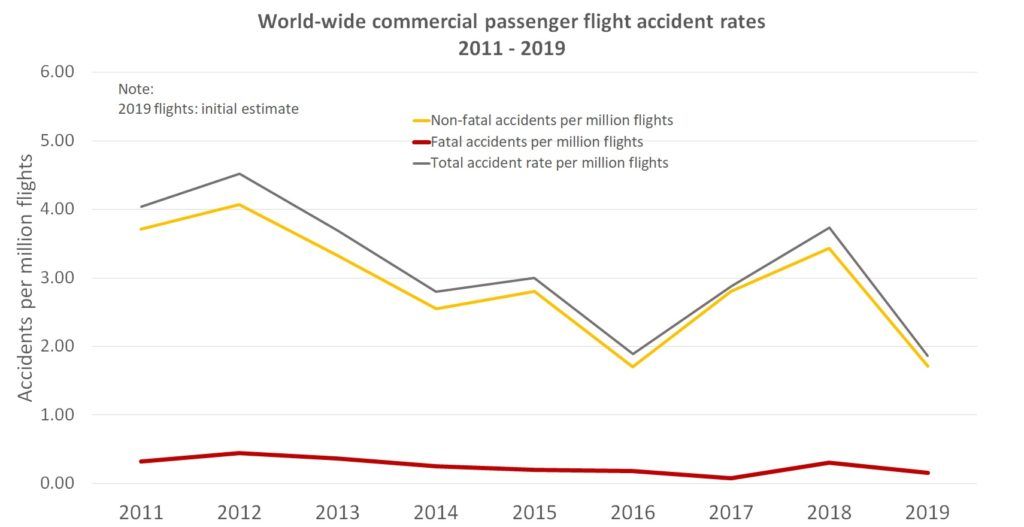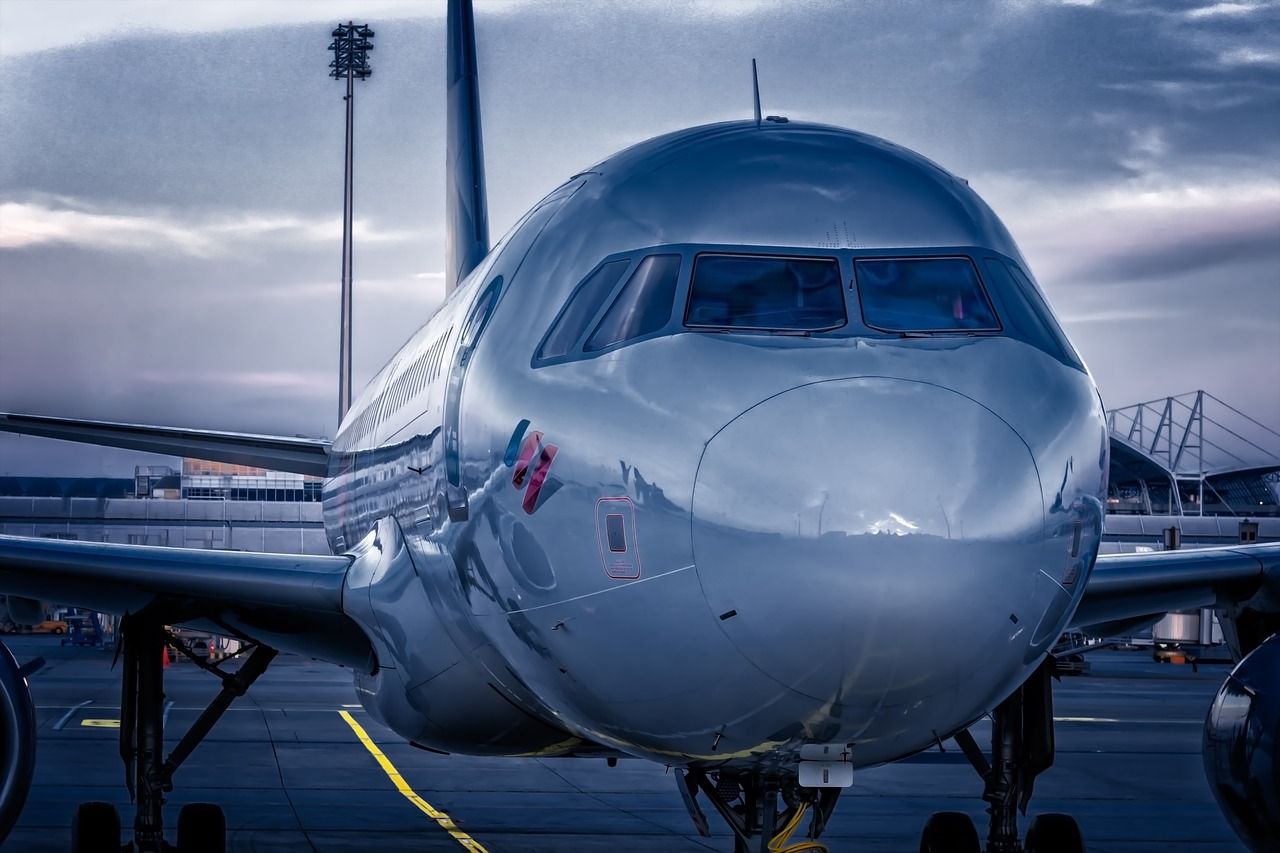2019 saw a reduction in fatal aircraft accidents involving large passenger aircraft over the previous year, according to a worldwide civil aviation safety review conducted by Netherlands-based aviation consultancy To70. The review, which covers passenger-carrying commercial air transport operations in aircraft with a maximum takeoff mass of 5700 kg (about 12,566 pounds) and above, found an accident rate of 0.18 fatal crashes per one million flights. The rate was 0.20 per million flights in 2018.
“Despite a number of high-profile accidents, this year’s fatal accident rate is lower than the average of the last five years,” To70 said in its report. “In 2019 there were 86 accidents, 8 of which were fatal, resulting in 257 fatalities. … In 2018 there were 160 accidents, 13 of which were fatal, resulting in 534 fatalities.” The company also noted that there were five accidents with more than ten fatalities in 2019 including the Ethiopian Airlines Flight 302 Boeing 737 MAX crash in March.
To70 says its annual safety review data comes from “publicly available databases, aviation authority websites and official sources such as ICAO’s ADREP database.” It does not include accidents involving military flights, training flights, private flights, cargo operations or helicopters.





































Chicken Little is NOT going to like this report.
And who would that be?
Chicken Little is a metaphor for doom-and-gloomers everywhere. We all know too many such fowl.
Yes the metaphor is well known. As toddlers we learned it at our mothers’ knees. To whom specifically are you referring?
I refer to no specific person. If I want to call out somebody, I address them by name.
YARS: Ha, ha, ha! Outstanding use of sarcasm! Love it!
As the rich get richer – fewer people can afford to fly. Grounding the Max may have contributed as well. In many cases it is faster to fly your own plane compared to waiting at airports and wasting time in layovers. When people think they have to fly for recreation, remember that the jet airliner is the number one biggest polluter of the world’s atmosphere and oceans.
Yeow. Voted for Hillary, right?
😱🤦♂️
You need to read a book on basic economics, Don. Might I recommend a book by the same title (i.e., “Basic Economics”) by Thomas Sowell? Alternatively, read articles by John Tamny (realclearmarkets.com). When the rich get richer, the rest of us become more well-off, too. For example, Jeff Bezos and Bill Gates have made countless human beings more well off (financially), besides improving quality of life in other ways for millions and millions.
“remember that the jet airliner is the number one biggest polluter of the world’s atmosphere and oceans.”
Nonsense. Coal-fired powerplants, automobiles, and a myriad of other sources emit FAR more polution than airliners do.
All forms of hydrocarbon fueled transportation (planes, trains, trucks, busses & ships) account for about 6% of global CO2 emissions. The manufacture of cement & concrete adds around 8%. Power generation is the largest single source (don’t remember the exact percentage), but it is rapidly changing due to the retirement of coal plants that are replaced by gas turbines, wind and solar power. It is correct that jet aircraft are the largest emitters in the upper atmosphere, mainly because they are the only emission sources up there. But, with modern clean-burning and fuel efficient engines, their net contribution is less than 2% of total emissions. And, their contribution to any oceanic pollution is zero. Hardly the root cause of all global CO2 “pollution”.
One must also remember that carbon dioxide is not a pollutant in the literal sense. CO2 is a natural component of the atmosphere which is non-toxic to life – it is actually essential to plant life. Its “normal” atmospheric concentration is about 0.8%. At concentration percentages above about 8%, it becomes a simple asphyxiant, but is still not toxic. Too much nitrogen acts the same way. No matter how much CO2 we emit, it will never come close to reaching toxic levels. But, it is a problem with respect to greenhouse gas concentration and global temperatures. (A topic of discussion for another day) One should also remember that North American emissions of CO2 have been steadily dropping in the past two decades, in spite of a large increase in cars, trucks and aircraft in operation. In fact, more people are flying than ever before, not fewer. If you want to control CO2 emissions, go talk to the Indians, Chinese and other developing countries.
+1
According to scientist, phytoplankton contribute to 50 to 85% of the world’s oxygen in Earth’s atmosphere. The ability for the ocean to produce O2 is dwelling along with the coral reefs. According to a study from Up in the Air: “Aircrafts’ high altitude emissions have a greater global warming impact than they would if the emissions were released at ground level.” Almost like areol spraying. The evidence of the damage is there – only the numbers are debatable.
(sp correction) “O2 is dwindling”
Here in Tacoma, my wife’s garden struggles to grow with the current temperatures. Bring on the warming!
I like global warming, especially right now. As a matter of fact, I would like about two more months of global warming. In about eight months I’m going to be in favor of and would like some global cooling if available.
+1